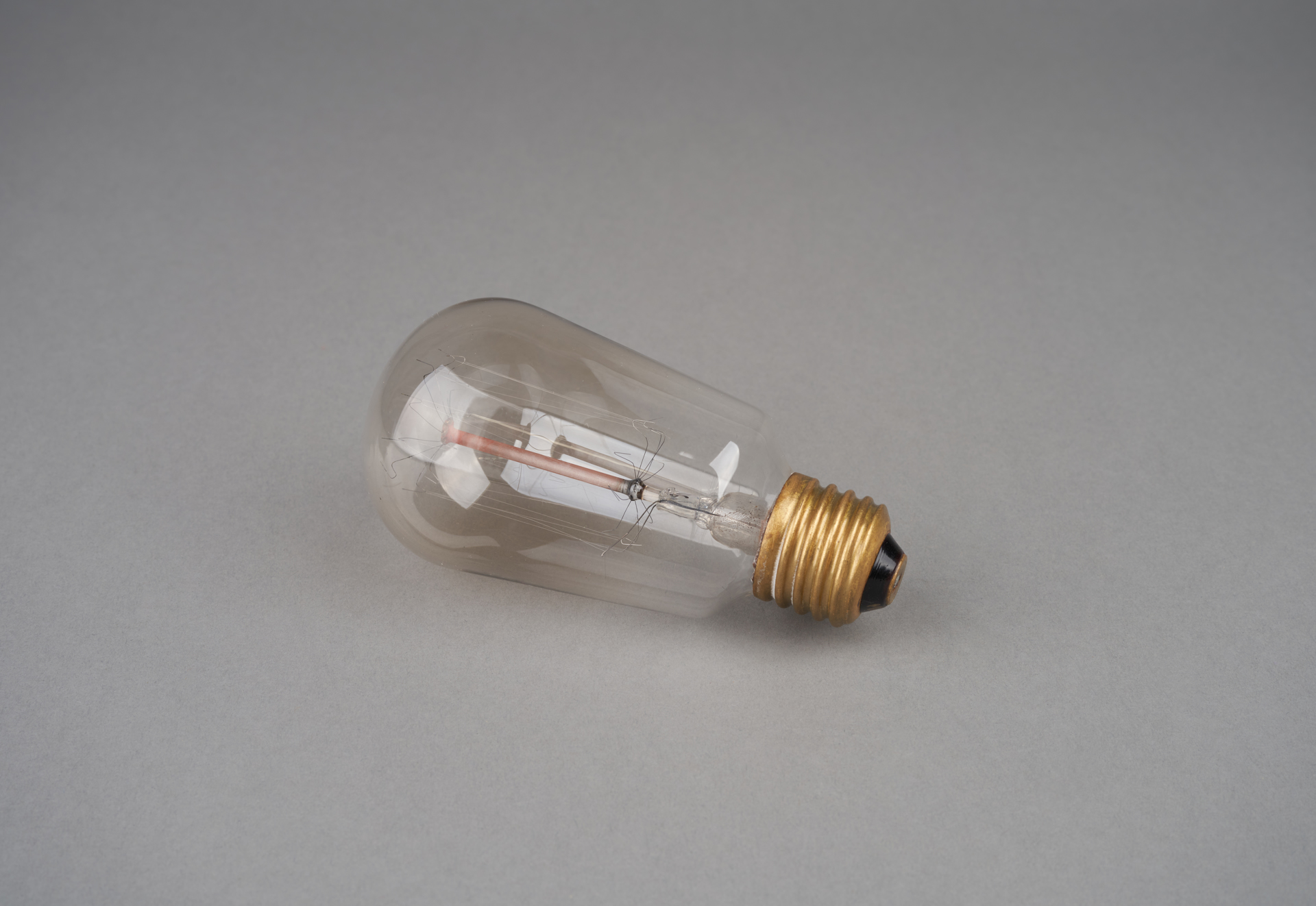
Tantris lightbulb
„Tantris” Małopolska Fabryka Żarówek S.A.,Creator
„Tantris” Małopolska Fabryka Żarówek S.A.
Time and place of creation
No data
Throughout the 20th century, the incandescent lightbulb was the most widespread type of lighting, with a multitude of uses. It consisted of the following components: a base with contacts to the power source, a glass bulb, and a filament that emitted light as electricity flowed through it. It is impossible to name one single inventor of the lightbulb, as many researchers were independently researching the emission of light by a heated conductor connected to an electricity source. In 1854, the author of one of the most advanced designs that had the characteristics of today’s lightbulbs was Heinrich Goebel – an engineer and mechanic of German descent from New York. Over its long history, the lightbulb underwent many improvements. Before tungsten filaments became commonplace, lightbulbs were produced with filaments of osmium, tantalum, carbon fibre or bamboo. Experiments were even made with cotton fibres. Over time, tungsten was found to be the optimum material as it ensured good light efficiency and the high durability of the lightbulb. Initially there was a vacuum inside the bulbs, but experiments showed that the introduction of a chemically inert gas, e.g. argon, allows the life of the filament to be extended as it delays the process of evaporation during use.
This lightbulb was made in the Małopolska Fabryka Żarówek SA in Lviv, which had been operating from 1928 and was the successor of the Żareg lightbulb regeneration workshop. The plant produced Tantris lightbulbs of good quality. In 1931, it was bought by the lamp companies of the Phoebus cartel, and then liquidated in 1934.
Interesting fact: Before the incandescent lightbulb was developed there was another type of electric light source – the arc lamp – in which the light was emitted by an electric arc created between two electrodes separated by a small gap. Arc lamps were less efficient and had higher running costs than lightbulbs.
References:
Kalendarium historii polskiego przemysłu oświetleniowego, prepared by M. Kołakowski, “Lightning.pl” website 23.10.2008, http://lighting.pl/Wydarzenia-branzowe/wydawnictwa-branzowe/Kalendarium-historii-polskiego-przemyslu-oswietleniowego (Accessed: 8.05.2021).
W. Puciata, Żarówki, Warszawa 1937, document available at: https://polona.pl/item/zarowki,Njc4NjY4NTQ/2/#info:metadata (Accessed: 8.05.2021).
A. Burghart, B. Müller, W. Hanseder, 100 years of OSRAM – Light has a name, Munich, December 2006, available at: http://www.lamptech.co.uk/Documents/Companies/100%20Years%20of%20Osram.pdf (Accessed: 8.05.2021).
Tantris lightbulb
„Tantris” Małopolska Fabryka Żarówek S.A.,Creator
„Tantris” Małopolska Fabryka Żarówek S.A.
Time and place of creation
No data











